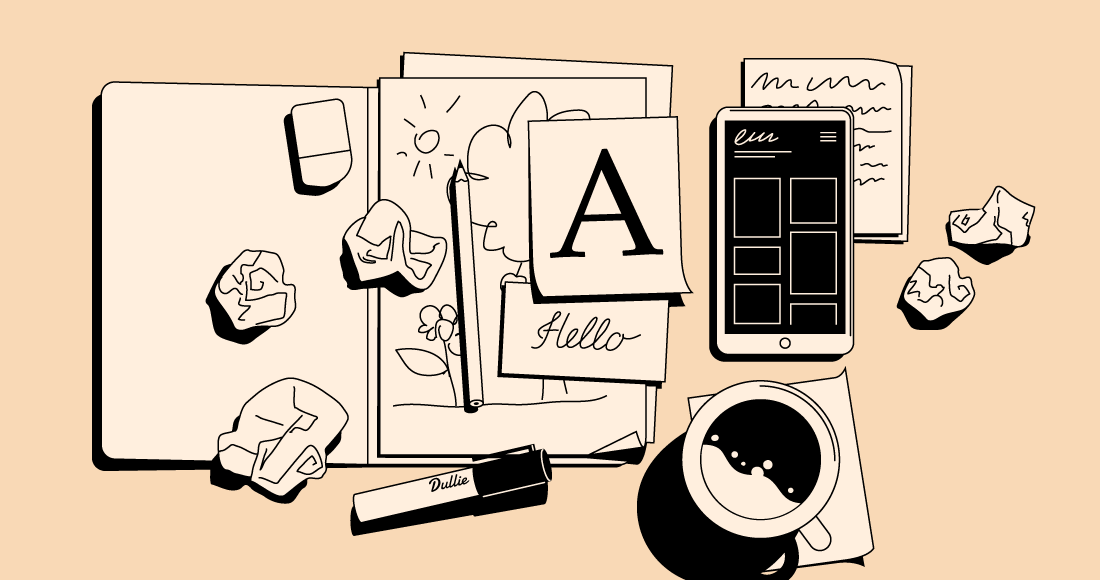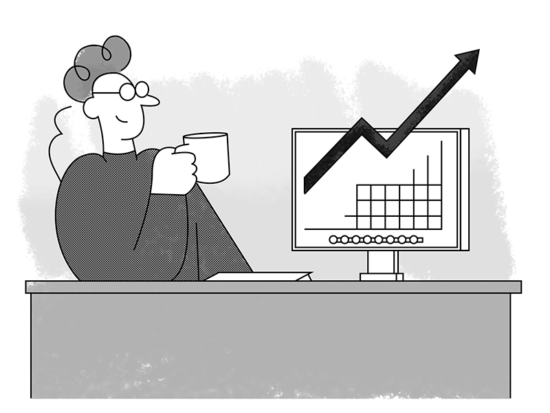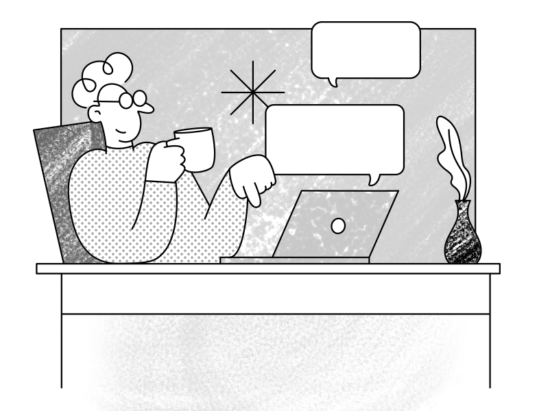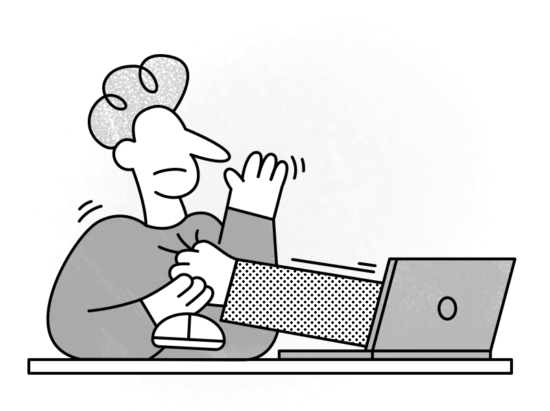A graphic design expert like yourself has to be aware of the fact that there are millions of graphic designers in the world. And they all want the same thing you do: to get hired.
And it’s not uncommon that a graphic designer from Spain gets hired by a client from the US. Or Japan. Or Morocco.
Yes. The whole world seems like a nano village stacked with excellent graphic designers, that are just a click away. Clients don’t have to put much effort into finding the right man for the job.
That’s why being an expert in your industry is just not going to cut it.
You need to do everything in your power to get the potential clients’ attention and spark their interest. You need to brand yourself and set yourself apart from your peers.
To do so, for starters, you have to build a stunning, flawlessly designed portfolio that represents you and the work you’ve done in the right light.
Your online portfolio needs to be original, and it should be able to make you relevant.
It needs to make the potential clients say “Damn, I wanna work with that designer!”
And it’s not an easy task.
So, to help you wow all the recruiters and potential clients, we have decided to write down the do’s and don’ts of making a graphic design portfolio. Here they are:
Do: “Spy” on other Graphic Designers
Face it 一 you’re not the first graphic designer that is looking to build an online portfolio. Nor will you be the last.
That’s why the first step of making a graphic design portfolio should be doing some research on how your peers built their online résumés.
What platforms did they use to create their online portfolios? What type of projects did they include? How did they design the About page? Did they provide an explanation of each project, or did they just include the graphics?
By checking your “competitors’” websites, you’ll get an idea of what is in trend now and in which direction you want to go.
Perhaps you want to build a minimalistic online portfolio, that’s not so feature-filled, and that’s entirely black and white. Or, you want to include some ‘90s inspired gradient, which will enhance your homepage’s flat design. Who knows?
To find your style, search for other graphic designers’ portfolios, and we are sure you will be inspired by their breathtaking work.
Bonus tip: The quickest way you can find other people’s work is by typing in the awwwards.com search bar “graphic designer” and wait for the results to pop up. It’s that simple.
Don’t: Skip on adding social media handles
Potential clients browse your site to see your work and get to know you professionally.
But, the truth is, a portfolio website serves not only as a CV but also as a tool that can save you the trouble of going to an interview.
How?
Well, as you probably know, in the interviews, recruiters ask all kinds of questions. Some of the questions have to do with the work you have done, while some of them are more personal.
When making a graphic design portfolio, the projects and the notes you have provided about the projects cover your professional side. Your personality, however, can shine through only if you include links to your social media accounts 一 Instagram, Facebook and Twitter (Behance and Dribble are a must!).
If you decide to show off a bit of your personality by including social media handles, be sure not to share each and every situation you go through when working with a client. For example, sharing frustrations, and rants you’ve had with previous clients is a big no-no. You want to come off as a person that is easy to work with, but also discreet and professional.
Do: Channel your inner van Gogh
Allow us to explain the title.
Do us a favor and type in the Google search bar “van gogh”.
What are the first few results that appeared?
The first one is probably Wikipedia, and below Wiki, you can find sites that write about van Gogh’s life, his eccentric personality, and the most famous paintings of this Dutch post-impressionist.
Not just any paintings. The most popular ones, like “The Bedroom” or “The Starry Night”.
As you probably know, van Gogh created multiple drawings, sketches, and paintings. However, out of all of them, people have heard about up to 10 paintings, which are considered to be van Gogh’s most prominent work.
Only 10! Out of several thousands of drawings, sketches, and paintings!
If you think about it, it’s perfectly understandable.
Sure, van Gogh’s immortal legacy will inspire artists for decades to come, but you have to agree with us that no one except Art students wants to analyze and admire all of van Gogh’s masterpieces.
Although you most likely can’t call yourself “the van Gogh of graphic design”, what you can learn from this brief story is that people, especially potential clients, can’t and will not try to remember all of your work. They won’t even bother going through all of your graphics and sketches. They’ll only focus on the projects they found the most interesting or beneficial for their company.
You’ll need to list ONLY the projects that describe the best your design style and how quickly and effectively you can adjust to clients’ and projects’ needs. When making a graphic design portfolio, be sure to list up to 10 recent projects. It’s more than enough.
Bonus tip: As we mentioned in the post in which we explained how to make an impressive online portfolio, be sure to separate all your projects into categories, so it’s easier for a client to find them.
Super bonus tip: As a graphic designer, you probably haven’t signed up only for paid client projects. But, just because there was no money involved, it doesn’t mean you should skip mentioning this sort of projects. Be sure to include the comics, editorials you have sketched, as a volunteer or to help a friend in need. This tip works amazing for less experienced, graphic designers that are looking to build their career.
Don’t: Forget to make your contact information visible
When it comes to Contact or About page, you should NOT hide your name, phone number, and email address.
Make recruiters’ lives easier by adding all this information in the footer. So, once they decide to reach out to you, they can find the information in just 2 seconds, no matter what page of your portfolio they are on.
Do: Write notes about the projects
Better yet, include a 200-word description of each project.
The reason why we encourage you to write notes about projects is that some of the work you have done is self-explanatory, some of it isn’t. But, no matter how easy to understand a project is, you should always name the client, and explain a bit the work you made.
So, when making a graphic design portfolio, and including project descriptions, we would suggest you include in the note who the client was, what the goal of the project was, who the target audience was and what skills/techniques you used. If the project was a success, you could explain how it was marketed and how the results were measured.
Bonus tip: When writing project descriptions, you can really let your personality shine through. For example, by adding a humorous comment at the end of each project note, potential clients will perceive you as someone who is highly experienced, but easily approachable and has a positive attitude towards work.
Don’t: Forget to give credit to the people that you have worked with
Team projects are great to participate in 一 they allow you to develop your soft skills and gain experience. But, that doesn’t mean that you should take all the credit.
So, if you plan on including team projects, be sure to credit every single person that was a part of the team. You can also add links to their portfolios. By doing this step, you’ll show recruiters that you are a true team player that respects other people’s abilities, skills, and expertise.
Do: Research web design trends and include them in your portfolio
No experienced, high-skilled designer should be lazy to invest time into making a graphic design portfolio.
Definitely not!
A graphic designer’s portfolio must be well-built, high-performance, and responsive. Above everything, it should make the clients’ jaws drop.
One of the ways you can achieve all of this is by doing research on web design trends before you start making a graphic design portfolio.
For instance, one of the biggest trends right now is an animation that makes an image appear when users hover over the text. If you are not sure what we mean, you can check Sara Marandi’s portfolio. This DP seamlessly included the animation to her website’s homepage. Believe it or not, we had added this option, when we were creating Bottega, our portfolio WordPress theme. You can see it in the theme demo, on the About page 一 when users hover over the word “jaw-dropping”, a skeleton dinosaur head appears on the screen. (It’s not as creepy as it sounds, we promise!)
Don’t: Go overboard with the number of menu items
Reducing the number of your menu items is a must if you want to stop potential clients from bouncing off.
Why?
Because for 94% of website visitors, easy navigation is the most useful website feature and because half of all visitors use the navigation menu to orient themselves on a website.
When it comes to your online portfolio menu, simplicity is the way to go 一 add the About, Contact and Projects pages, and you’re good to go. It’s that simple.
You have reached the end!
And that’s it! There are all the tips we wanted to share regarding making a graphic design portfolio.
Now, it’s time you get to work and create the best portfolio a graphic designer can make. Fingers crossed!
Are there any tips we forgot to include? Do you have some tips up your sleeves you would like to share? If you do, be sure to write them in the comments below.



